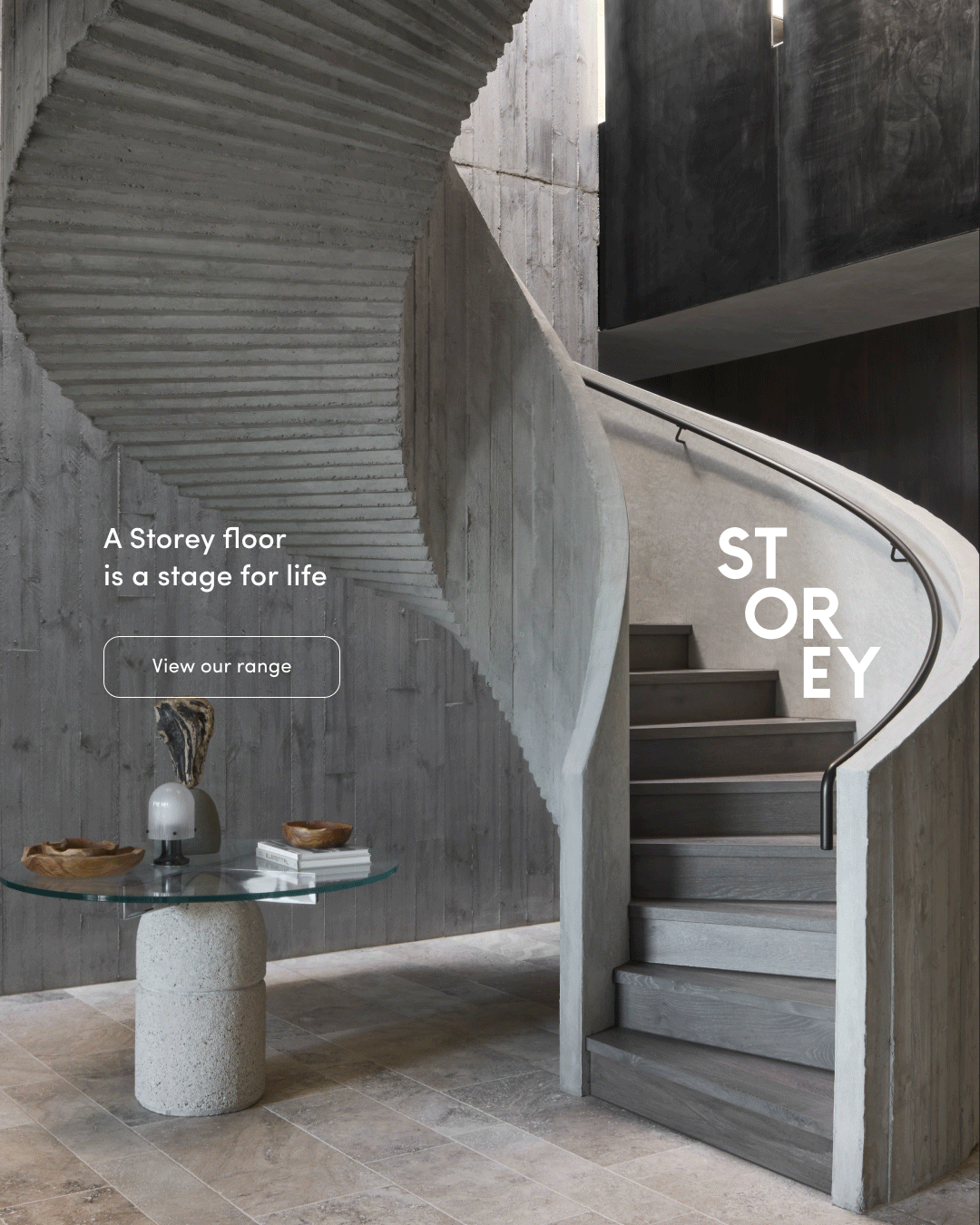
Embracing Origins – Matthews House by Kennedy Nolan
Focusing on an outward connection, Matthews House sees the transformation of an existing late-modernist home into an allied and intentional series of spaces, enriched through texture and tonality. Kennedy Nolan composes a series of interventions amongst the existing, overlaying a cohesive and binding approach across multiple levels while consistently ensuring a focus out into the landscape throughout.
Already embedded with its own sense of self, Matthews House began as a combination of the midcentury style together with a highly formalised approach to planning throughout. The modernist movement was founded on an openness, both internally and out beyond the built elements, and was a time of utilising new technology and access to steel to create long spans. Yet in this case, those spans merely encased a series of smaller rooms, missing the opportunity to create a greater sense of openness. In response, Kennedy Nolan opened the building from within, completing the story of the home as a true representation of its time while also connecting to the present.
Located in Melbourne, Matthews House was built by IBuildM and sits amongst a cleverly curated series of garden settings by Amanda Oliver. As key to the experience of the home, the clear visual access between inside and out is expressed through the large external glazing elements, while additional openings encourage movement between inside and out at the same time. Surrounded by its own unique landscape and established trees, the setting the home sits amongst enhances a feeling of enclosure and retreat. While connections out play a big role, so too do the connections within and between the internal zones. Enhancing movement, the previous formality in the planning is opened, allowing better flow and for new bonds to form between shared zones in the process.
As a levelling between the highly articulated interiors and the less formalised exterior, remedial works were overlaid on both, ensuring a balance was struck between the two, forming a more cohesive bond. Expressing the connection to the outside, a new stair extends down from the level one terrace space as part sculpture and part celebration of that connection – allowing eased access both vertically and horizontally. In bringing a sense of cohesion between strong architectural design styles, there exists a tendency to imprint additional and conflicting elements that respond more to current trends than to what already is in place. In most cases, the home is in search of a more intuitive response, one that enhances what already exists, without adding further confusion. The saturated and rich materiality is selected for its expressive nature, but there is also a sense of restraint, ensuring a balance exists and for these features to remain as features, instead of being an overload.
Through a respectful lens, Matthews House emerges as a nod to the past, while integrating key enhanced liveability cues. Kennedy Nolan pays an homage to the modernist movement, allowing its lineage to continue and strengthening the character of the home in the process.

![Book Flatlay Cover Front Transparent Trio[1]](https://d31dpzy4bseog7.cloudfront.net/media/2024/06/07080212/Book_Flatlay_Cover_Front_Transparent_Trio1.png)






















